MOBILITY FIRESIDE CHATS, AUTONOMOUS GROUP HUGS, PITCHFORK-WIELDING TECHNO-HORDES AND THE USUAL ASSORTMENT OF SPINELESS WEASELS, RECALCITRANT TWERPS AND UNMITIGATED HACKS. WELCOME TO THE END OF THE BEGINNING OF A BRAVE NEW AUTO WORLD. THAT’S RIGHT, KIDS, IT’S TIME FOR THE AUTOEXTREMIST YEAR IN REVIEW!
 Saturday, December 16, 2017 at 01:13PM
Saturday, December 16, 2017 at 01:13PM By Peter M. DeLorenzo
Detroit. So, it has come down to this. Even though the autonomous zealots are quite sure where this is all going, the auto business is careening down a path of the unknown. We’re straddling a rolling dichotomy consisting of an idyllic vision of our transportation future made of generic pods that can be summoned at our whims, while reality suggests that our personal transportation options are likely to remain the same as what we’ve been used to for years to come. Sure, those options may be hybrid and electrified, but personal choice will still reign.
That doesn’t mean the noise will stop anytime soon, however. We are going to be inundated with tales of a Brave New Auto World by the pitchfork-wielding techno-hordes hell-bent on eradicating the automobile as a symbol of personal freedom, because they view this country’s fascination with and reliance on the automobile in all of its forms as a tragic malfeasance that destroyed our cities and warped our view – and way – of life.
But the reality is almost 180 degrees different from that. Every dimension of the American experience has been shaped by the automobile – the roads we used to explore the vast expanses of the unbridled majesty of this nation (and ourselves along the way); the music that provided much of the soundtrack for those journeys, the roadside attractions and the road food that went with them; the big cities and little towns along the highways and byways; and on, and on, and on. (Talk to anyone who has visited The Henry Ford museum recently and see what he or she has to say. In so many words, it will sound like this: The American experience is the automobile, and the automobile is the American experience.)
But that won’t stop some – namely, certain politicians in Northern California, Washington, D.C., and the Masters of the Universe in Silicon Valley – from insisting that this fundamental transformation of our transportation model can’t come soon enough. For those people who view the automobile and the automobile industry and everything associated with it as a national scourge that needs to be eradicated once and for all, it will be Sweet Victory, a fitting denouement for the filthy automobile, a march of progress that will benefit everyone. For these people the historical context of the automobile has been overwrought and overexaggerated from the beginning, and to finally put paid to the notion of the automobile’s wonderfulness is an accomplishment that they will giddily revel in for decades to come, because for them historical perspective is just old stuff about old, irrelevant people.
Oh well, enough about that. We shall see what we shall see. But I am quite confident that our personal transportation – and the personal freedom that comes with it – will remain vibrant and essential for decades to come.
And now, for the subject at hand: The Autoextremist Year in Review (including "On The Table" and "Fumes") is one of our most anticipated issues every year, so we hope you enjoy it as much as we did putting it together.
The one unequivocal, undeniable thing about this business that never gets old is that you just can’t make this shit up. So, back to this year of selling air business. There’s a brand-new auto company on the horizon, one filled with Shiny Happy Optimism, bright sparkly quotes and overreaching promises that will soon set the world afire with yet another $100,000 all-electric car. It even has a seasoned ex-BMW executive at the helm. The company is called Lucid, and the car it will bring to market by the end of by 2019, or um, oh hell, it’s better to not hold them to it, is called the “Air.” (Lucid ground to a screeching halt by the way.) ("WELCOME TO THE YEAR OF SELLING AIR.” – 1/2/17)
Yes, it got that stupid. Things got so touchy-feely at one point that I thought we were being shown previews of a future Hallmark movie with the plot revolving around the fanciful – and lovely (in an “Old School” Olive Garden sort of way) – Autonomous Village, a very special place where shiny happy people who are kind and considerate live and everything is wonderful and beautiful because they had finally been freed from the drudgery of driving. (“MOBILITY FIRESIDE CHATS, AUTONOMOUS GROUP HUG SESSIONS AND AN UNWANTED REMAKE OF SHAKESPEARE’S “MUCH ADO ABOUT NOTHING.” WELCOME TO THE BRAVE NEW AUTO WORLD, FOLKS. AND BY THE WAY, WE JUST "GOTS" TO KNOW: WHO ARE YOU AND WHAT HAVE YOU DONE WITH THE DETROIT AUTO SHOW?” –1/11)
We know what we’re doing, why must you bore us with such stupid questions? If there were an annual award for arrogance in the auto world, Mercedes-Benz would win it going away, every year. Once again Dieter Zetsche got up in front of the carpal tunnel-impaired wretches in the press and did his usual “aw shucks, we’re Mercedes and you’re not” stump speech, this year emboldened by the fact that Mercedes won the U.S. luxury sales crown. But not before taking an opening shot at the Detroit Lions football team for no good reason. It wasn’t funny. (1/11)
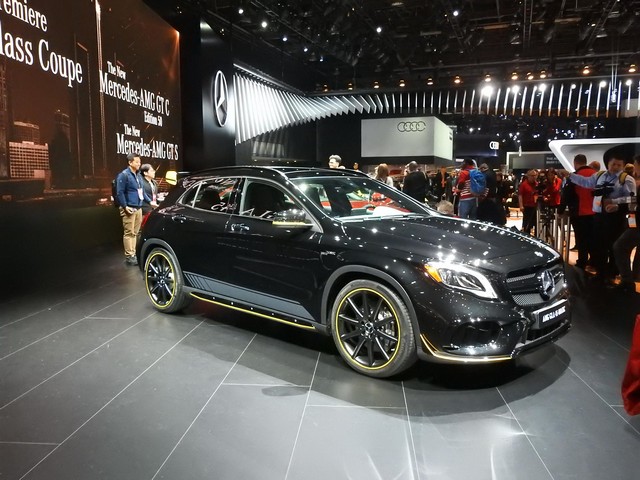
(newspressUSA)
I just can’t wait for the AMG brand to be distilled down to a tape and stripe job with a logo slapped on the back. Nicely done, you unmitigated hacks. The big news in the Mercedes display was the fact that it’s clear that company operatives believe that if a couple of AMG models were good, dozens more would be even better, right? Wrong. Mercedes-Benz once again demonstrated its unequaled propensity for overkill by – as I predicted two years ago – running the AMG brand into the ground by hanging those letters on just about every car on the show floor, to the point that AMG is rapidly heading to a place where it doesn’t mean a damn thing. The only car they forgot to slap the letters on was the Smart, but stay tuned, they’ll probably screw that up too. The High-Octane Truth? They don’t know what they’re doing and they don’t know when to stop. (1/11)
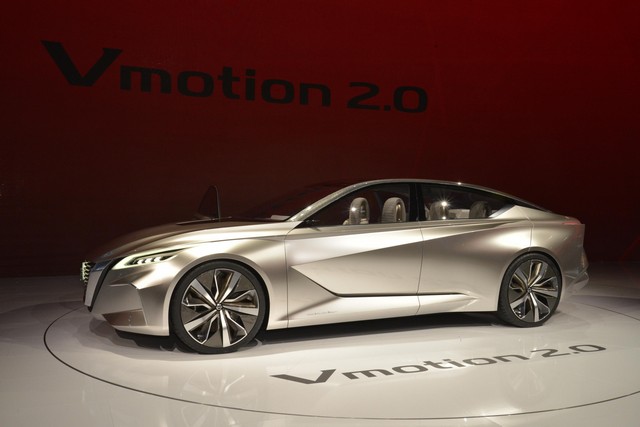
(newspressUSA)
We’re Nissan, and we haven’t had an original thought in years. That is all. The fact that Nissan is openly cribbing the new Lexus design language for its Infiniti brand is so obvious it is painful. In Detroit they unveiled the Nissan Vmotion 2.0 concept, which doesn’t have even a fifth of the cohesive elegance and presence that the production Lexus LC500 has. There’s no point in asking what these guys are thinking, because clearly they’re not. (1/11)
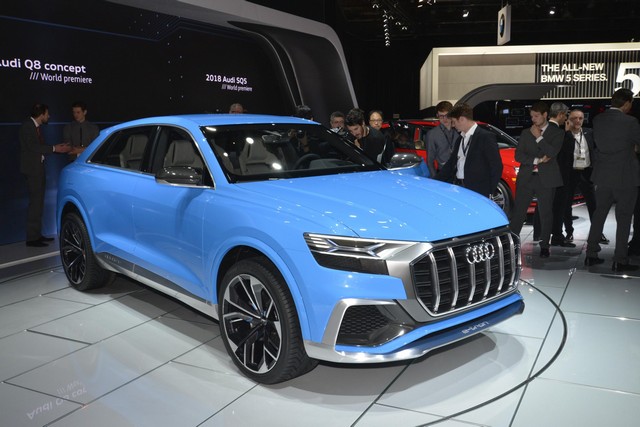
(newspressUSA)
Say hello to our new models, Ka and Ching. Despite the singed eyebrows from the VW Diesel emissions cheating scandal, Audi keeps delivering profits to the VW Group hand over fist. And when you do that within the Evil Empire at VW, this is a very good thing because it means Audi is rewarded with a bigger slice of the development money pie. Thus, the debuts of the new Q8 concept and the SQ5 production car. As long as Audi keeps crankin’ things will continue along. Good times. (1/11)
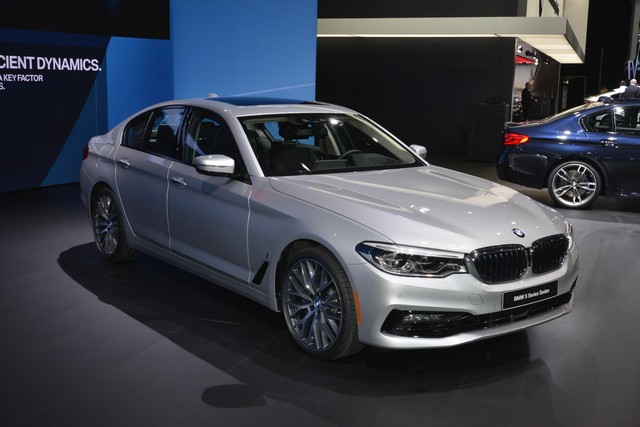
(newspressUSA)
Take a bow, folks, you’ve officially descended into The Abyss of Mediocrity. A faction of the BMW propeller heads has decided to phone it in until someone tells them to stop, apparently. The new 5 Series is so uninspired, uninviting and distinctly underwhelming that it’s flat-out shocking in its blandness. It’s as if no one gives a shit over there anymore. The BMW 5 Series looks five years old right out of the gate. Make that ten. (1/11)
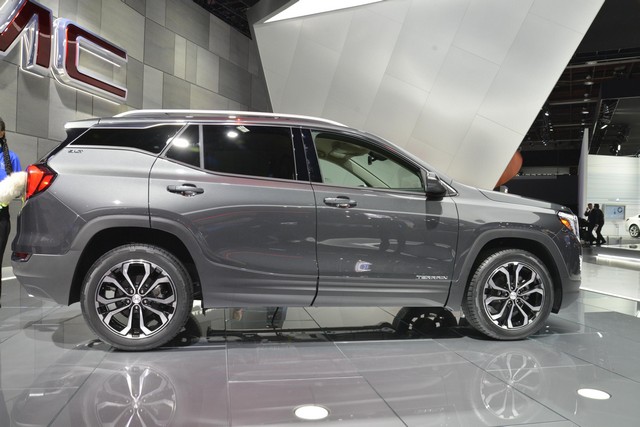
(newspressUSA)
We didn’t used to do derivative, but we’re finding it to be a comfortable space right now. GM showed the new GMC Terrain, an unfortunate mish-mash of me-too design gimmickry that was truly breathtaking. In a very bad way. The back ¾ rear detail is particularly offensive. Back in the day, GM Design would never do derivative, it was anathema and something that Bill Mitchell would never allow. Oh sure, he would draw inspiration from Italian designers, but he’d rather turn in his pen before copying a mediocre Japanese product. I detected a slide in GM Design with the overrated Buick Avenir concept, which was distinctly uninspired, followed by the Avista, which was GM Design’s homage to the Tesla, apparently. It all adds up to a giant Bowl of Not Good. I suggest that GM Design’s new chief, Mike Simcoe, better light a fire under his operatives and start emphasizing inspiration, originality and genuine vision before it’s too late, because once you go off the rails in the Design Game, it takes years to get it back. (1/11)
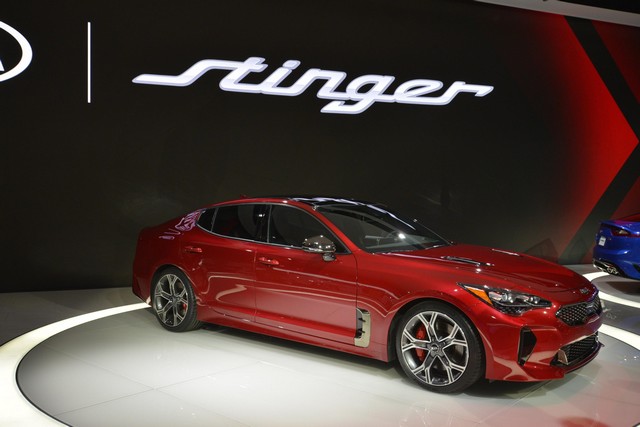
(newspressUSA)
Alfa Romeo called - they want their 3 Series copy back. I used to think that Kia had it going on, an emerging automobile company with unlimited potential. Bristling with international design talent and an improved engineering focus, Kia had all the attributes of a coming brand, or so I thought. Then, they dropped a steaming load of mediocrity on the Detroit Auto Show, and in one fell swoop they destroyed any momentum they had, as well as destroying any reason to take them seriously. Let’s review, shall we? The Alfa Romeo Giulia is a blatant copy of the BMW 3 Series. And now Kia decides that doing a blatant copy that blends the Giulia and the 3 Series is actually a good thing? And the name Stinger? Did we miss the memo that decided that it was cool to be stuck in 1967 again? Don Yenko is not amused. Maybe they should have perused a Dodge Dart catalog of yore and called it Swinger. I don’t care what the performance capability of this thing is, because it’s clear to me that they need someone in the decision making room with the cojones to speak up and say at the critical moment, “Uh, what the fuck are you guys thinking?” Until that happens, Kia goes back to Do Not Pass Go Land. (1/11)
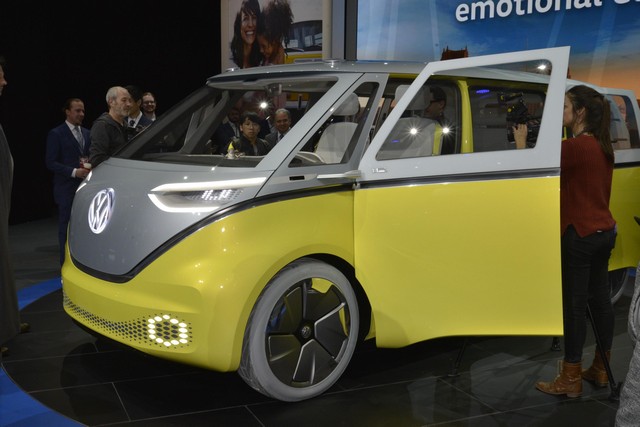
(newspressUSA)
My “Best in Show” in a decidedly downbeat and very disappointing Detroit Auto Show was, hands down, the VW I.D. BUZZ. I said back when the Diesel emissions crisis hit that the only thing that would repair VW’s image in this country would be distinctive products that marched to a different drummer, machines that only VW could build. An all-electric, modern rendition of a VW Bus with autonomous capability for way down the road would be a great place to start. Some of the features of the BUZZ are not going to make production, but you could tell that the basic shape was production intent. And kudos has to go to the normally staid VW executives for going with the name “BUZZ.” A little fun was much appreciated at this gloomy show. A production version of this vehicle appears to be on the docket and viable for 2020. VW needs to move that date up ASAP, because this vehicle is a grand slam home run if I’ve ever seen one. (1/11)
Move the Detroit Auto Show? What, are you crazy? My summation of the Detroit Auto Show set off a firestorm of indignation among certain homers in the local auto media, a few PR minions at the auto manufacturers and others at the Detroit Auto Dealers Association (DADA), the group that is responsible for putting on the show every year. Now, it’s obviously not the first time I’ve managed to get factions in this industry’s collective shorts in a bunch - and I can assure you it won’t be the last - but the hue and cry generated by the unbridled temerity of my suggestion to move the show to a completely different time on the calendar (June, after the Grand Prix weekend) was just too much for some to bear, obviously.
Those opposed to the idea of moving the Detroit Auto Show are vehemently agitated about the alleged “disruption” it would cause, apparently, and insist that if such a cataclysmic event occurred our very way of life as we know it would be irrevocably harmed. One resident homer in the automotive press suggested that jobs would be destroyed, the money generated from the charity preview would be neutered, Cobo Hall would be decimated and chaos would ensue. Really? Let’s take a deep breath and look at this rationally.
Is it etched in stone on sacred tablets buried in secret catacombs underneath the city that Detroit would have this one and only auto show date on the calendar, and nothing else? Hardly. Was there a pact among the overlords who run the world’s auto shows that dictated that Detroit in January is the way it shall be and no deviation from “the plan” would be accepted or tolerated? No, of course not. ("DETROIT HOMERS AND THE RIGHTEOUS ORDER OF THINGS.” –1/18)
We will do what we want, when we want when it comes to our interactions with "you people" in the press because as a group you’re all just lazy dilettantes and we can and will manipulate you or the situation to a fare-thee-well and there isn’t a damn thing you can do about it. Or, words to that effect. There is an incredible arrogance rearing its ugly head among certain PR operatives that suggests that they’re smarter than everyone else – especially the people covering their respective companies – and because of that they feel entitled to trample on everything and everyone in their path if it means getting the results they want. Part of this toxic attitude stems from the overwhelming need to please company higher-ups, which the PR operatives in question believe can garner meaningful gold stars, and which will then translate into recognition and more money. I get that, to a degree, but when veteran PR practitioners are overly worried about gold stars there is serious cause for concern. But then again I think the root cause of it is far more cynical, depressing and dystopian than that. There is an incredible air of condescension hovering over PR-orchestrated media events of late. Not only is it blatant and out in the open, it’s chillingly matter of fact. (“ALTERNATIVE FACTS AND THE EXISTENTIAL CRISIS IN AUTOMOTIVE PR.” –1/25)
So pay attention, Mary and Mark, you’ve been officially put on notice. Sergio? Go get your shine box. When votes are needed, the auto industry “is crucial to the well being of America” (insert language along those lines). But after the election is over, the collective “Detroit” (aka the domestic auto industry) is just a plastic bag caught in the swirling maelstrom of the prevailing political winds. The new President clearly doesn’t give a damn about the auto industry, even though he insists just the opposite. He speaks with the proverbial forked tongue and he will always take the politically expedient path of least resistance. (“THE SWIRLING MAELSTROM TO THE FORE.” –2/1)
For the record, I can safely say that no songs will be written about autonomous pod cars. Can the industry sustain this dance? It has no choice. The automobile companies can’t just be part of the solution going forward, they must lead the discussion and determine the direction, because after being engaged in the transportation business for over a century, squandering that legacy isn’t optional. Besides, they have incredible operating margins dancing in their heads from these autonomous pod cars, and some believe we’re on the precipice of New Profitability the likes of which this industry has never seen. I am not buying into that, at least not yet. The theories all seem fanciful and wildly blue sky at this point, and the fact remains that no one really knows how it’s going to play out, despite all of the wildly aggressive projections from the hordes of card-carrying MBAs stumbling around this town. There’s no question the dawn of autonomy – though providing a measure of freedom in certain circumstances – will be the end of the automotive era as we know it. And if that Dystopian future can be held at bay for another 30 or so years, I’ll take it. (“THE NEW REALITY.” –3/1)
And the funny-sad thing in all of this is that Marchionne’s massive, aircraft carrier-sized ego simply won’t allow him to understand this reality. Being The Great Sergio, of course, he considers the PSA-GM deal vindication of his brilliance because he suggested several years ago that consolidation of this industry is inevitable. Not exactly an earth-shattering notion I might add, but now he thinks that auto companies should be beating down his door just clamoring for a linkup with FCA, and he is frankly flabbergasted that these companies don’t see the brilliance of his vision.
Why is that, you might wonder? Why do companies avoid Marchionne like the plague? As I said a year ago it’s because both people and corporate entities find him ferociously unpalatable, utterly loathsome and flat-out untrustworthy. Now, this doesn’t necessarily mean that some corporate entity won’t make a deal with him, but it will never be on Marchionne’s terms, not in this lifetime at any rate.
Marchionne serenely shuffles along to the dulcet tones of his own thought balloons, absolutely convinced that he can force his will on anybody and come out smelling like a bountiful Italian garden in spring. The hubris of this guy knows no bounds. (As I’ve said previously, I wouldn’t be surprised if, after he shuffles off to his post-FCA riches, he forms a new religious order solely based around the concept of hubris – known as the order of Hubrissiani Marchionnes - so he can sit around all day and regale his acolytes with stories of his brilliance. No vow of poverty required.) ("SERGIO GOES BEGGING, WHILE THE CLOCK KEEPS TICKING.” –3/15)
In fact, every time I say to myself, “They couldn’t actually be that stupid, could they?” I am reminded that yes, they actually can be. And too often are. I never grow tired of exposing the ugliness in this business, because it’s the carpetbagging mercenaries, the spineless weasels, the unctuous pricks, the cover-their-ass bureaucrats and the recalcitrant twerps who make this whole twisted automotive circus so compelling to cover. Having been exposed to decades of relentless mediocrity in this business, I have corralled a set of shockingly low expectations. And guess what? I am never disappointed. Yes, there are still hordes of True Believers around, men and women who eat, sleep and breathe this business, and who make a significant difference every single day. And thank goodness, too, because if it weren’t for them, the pod car era would be upon us sooner than we might think. (“THINKING OUT LOUD.” –3/22)
So excuse me when I don’t get excited at The Great Enlightenment that’s coming just over the hill. For the rest of us it will mark nothing less than the end of the American experience as we’ve known it. The automobile is so crucially linked to the industrial fabric of this nation that pretending otherwise is simply impossible to do. The reason the Silicon Valley Overlords have come calling to the collective “Detroit” is that this industry and this area have been this country’s center of expertise in manufacturing, materials and advanced technology for well over a century. The automobile industry has stepped up time and time again to support this nation at its darkest times, with the forming of the incredible “Arsenal of Democracy” being just one notable – and remarkable - instance.
But that’s just one dimension of the impact, because the automobile has played such an inexorable role in creating much of the culture of this nation that it is simply incomprehensible to contemplate America, as we know it, without it. The automobile’s influence on this country’s culture is almost incalculable. But then again it’s even more than that. It’s part of this country’s soul, it’s who we are and it’s where we’ve been and it’s where we’ve always wanted to go. It’s the fundamental freedom of movement and unleashing of the spirit, and it’s the mechanical embodiment of our hopes and dreams. In short, that distinctly American perspective, that wanderlust for seeing and doing and exploring that was fueled and driven by the automobile for over a century, is being buried alive, right before our eyes. (“OUR AMERICAN WANDERLUST IS BEING BURIED ALIVE.” –3/29)
Car advertising sucks for the most part. Why is that? 1. Automobile companies are risk averse, especially when it comes to their image. Yeah, I know, there’s a shocker. Automotive companies are the last bastions of the quintessential “running scared” corporate mentality. Car companies are afraid of every doomsday scenario, every possible shift in the political winds, every litigious threat both real and imagined, basically they’re afraid of absolutely everything. And of course they bring that mentality to bear to each and every advertising/marketing meeting.
2. Automobile companies are teeming metropolises within CoverYourAssLand. Yes, this isn’t exactly news, either. For every touchy-feely pronouncement about the “enlightened” workplace and that business is usual isn’t business as usual, make no mistake it very much is business as usual. What is the first order of business on any given day of every mid- and upper-management executive at a car company? That’s easy, it’s making sure their boss looks good and it’s making sure their ass is covered no matter what the looming scenario, because the very last thing they want to have happen is to be caught up in the collateral damage when things go wrong. This doesn’t exactly lend to a proper mindset when considering creative work that projects an image for the company, now does it? In fact it sets up such a dismal playing field that as I said previously it’s a miracle that any good work gets through this gauntlet of abject mediocrity.
3. Speaking of abject mediocrity, too often marketers at the car companies aren’t marketing professionals at all. What, or more accurately, WTF? Yes, the sad truth for many car companies is that (allegedly) up-and-coming executives are assigned to the marketing function to be “seasoned” as part of the broadening of their experience within the company. I’ve sat in countless meetings where the cumulative experience of the executive in the room making calls on multi-million-dollar advertising amounts to a big fat zero. In fact one executive back in the day who was new to his assignment had the temerity to say to me before I presented crucial new creative, “I know what good advertising is. I watch TV.” That’s a true, unembellished story. WTF indeed.
4. Too many cooks lead to bad, lowest-common-denominator advertising. One of the most, if not the most, egregious behaviors that is rampant when it comes to automotive advertising and marketing is that these companies allow too many singularly unqualified people to weigh-in on creative work they wouldn’t understand even if you took the time to slow-walk them through it. When you have an executive who is allegedly in charge of the advertising who is unqualified, and then he or she invites more unqualified people to weigh-in at a pivotal go/no-go advertising meeting, chaos ensues, bad decisions or non-decisions are made, and inevitably the result is lowest-common-denominator advertising that's instantly forgettable and appeals to no one.
5. The best advertising is inevitably the result of a much smaller core group of people within a company who have meaningful marketing and advertising experience and who understand what they’re doing on a fundamental level. And this is an essential point: these executives also succeed when they have the full support of the top management of the company and are not meddled with. This is an almost unfathomable scenario, but the top management that understands that marketing may not be their strongest suit and allows – and even more important trusts - the people charged with the function to do their jobs ultimately gets the best image work on behalf of the company. But the reason this is a Unicorn Scenario is that top management is usually a cesspool of egomaniacal intransigence, and they hate being told to stand down and let the experts do what they do. They just feel compelled to put their fingerprints on the creative work, not for the good of the work but just because they can, which inevitably affects the work in a negative direction. (“WHY CAR ADVERTISING BASICALLY SUCKS.” -4/5)
Welcome to the Land of Cray-Cray, where the sky is bluer and the grass is greener. The buzz revolves around the fact that the valuation of Tesla, the maker of electric vehicles that has rarely – as in never – made money being in the business of making cars, now has a market capitalization of $50.9 billion, which is $64 million more than General Motors. As David Welch pointed out in his excellent piece for Bloomberg, “GM expects to earn more than $9 billion this year and analysts predict Ford will generate adjusted profit of about $6.3 billion. On that basis, Tesla is expected to lose more than $950 million.” Read that back again slowly. And no, that’s not all; it gets even worse than that. Welch goes on to quote Alexander Potter, an analyst at Piper Jaffray Cos., who said the following: “Tesla engenders optimism, freedom, defiance, and a host of other emotions that, in our view, other companies can’t replicate.”
Wait a minute, is this is a financial analyst talking, or one of Elon Musk’s unpaid shills who dot the landscape and crawl out of the woodwork wielding pitchforks the moment someone has the temerity to slam their esteemed leader for his smoke-and-mirrors act? Well, both actually. Yes, Potter is not only an analyst who upgraded the stock on Monday, but also an analyst who has owned a Tesla for seven months and who added, “As they scramble to catch up, we think Tesla’s competitors only make themselves appear more desperate.” Catch up to what, exactly? Remember, folks, we’re talking about a car company that sold around 80,000 vehicles last year. For the record, GM sold more than 10 million. In the immortal words of Vince Lombardi, “What the hell’s going on out here?!?!”
If you’ve wondered why Tesla continues to be the darling of certain factions on Wall Street, against all rational measures of evaluation, I might add, you only have to re-read Potter’s telling quote to understand the madness. The valuation has nothing to do with any rational measure or reasoned perspective, it’s the Silicon Valley True Believers populating Wall Street who are completely intoxicated by the vapor trail left by the Muskian Vision of bunny rabbits and rainbows being propelled across the sky.
In other words, the Wall Street analysts buying into Tesla have veered off into The Land of Cray-Cray, where the sky is bluer and the grass is greener, and The Future will be forged by the visionary brilliance of Elon Musk, and all of those dirty, nasty – and old – smokestack car companies that form the industrial fabric of this nation will be relegated to the scrap heap once and for all, replaced by clean, incandescent factories made up of equal parts magic and group hugs. (“IN THE LAND OF SMOKEY MIRRORS, RATIONAL THOUGHT IS A RARE COMMODITY.” -4/12)
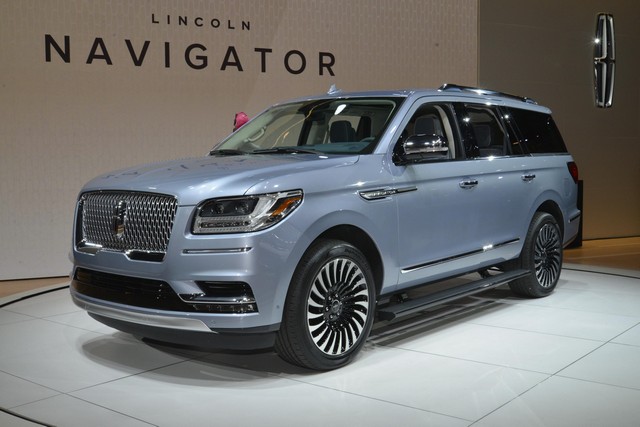
(newspressUSA)
The new Navigator seems to touch all the bases, but prying buyers’ hands away from the Escalade is an entirely different thing. The big news from New York, judging by the hordes of people crowded together at the press conference, was the debut of the production version of the Lincoln Navigator. Decked out in an unfortunate shade of “yachting” blue – listen, vive la difference and all that but it didn’t come off well, I dubbed it “Apologetic Blue” – the new Navigator is everything the Navigator faithful could want, and much more. But that isn't the question here, is it? The question is whether or not the new Navigator will conquest shoppers away from the acknowledged King Kong of domestic luxury SUVs, the Cadillac Escalade. (“THE POST-NEW YORK AUTO SHOW BLUES.” -4/19)
But in the face of a business that grows more rigid, regulated and non-risk-taking by the day, there are still lessons to be learned from the legacy of Bill Mitchell. If anything, we must remember what really matters in this business above all else – something he instinctively knew in his gut – and that is to never forget the essence of the machine, and what makes it a living, breathing mechanical conduit of our hopes and dreams. And that in the course of designing, engineering and building these machines everyone needs to aim higher and push harder – with a relentless, unwavering passion and love for the automobile that is so powerful and unyielding that it can't be beaten down by committee-think or buried in bureaucratic mediocrity. Bill Mitchell had an uncanny knack for getting the best out of the talented people around him. And he led the only way he knew how – and that was by fueling creativity with his passion and by the sheer force of his will. What he believed in is as true and vibrant today as it was in his era – and hopefully, at least in some quarters of a few car companies, that will always be the case. (“BILL MITCHELL – THE PASSIONATE DESIGN MAESTRO.” –4/26)
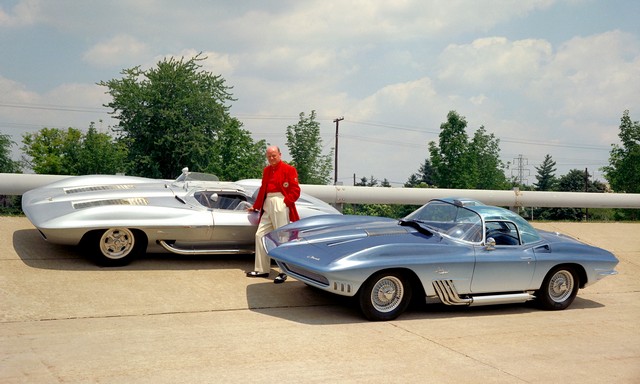
(GM Design)
Bill Mitchell stands next to two of the most iconic GM designs under his reign: The 1959 Corvette Stingray racer (XP87), and the 1961 Corvette Mako Shark (XP-755). A 19-year-old Peter Brock (who later went on to design the Cobra Daytona Coupe for Carroll Shelby), Larry Shinoda and Mitchell himself worked on the Stingray racer in 1957, which obviously influenced the fabulous '63 Corvette Stingray production car, and Shinoda and Mitchell worked on the Mako Shark concept. One of the countless anecdotes from the Mitchell era? He caught a Mako shark on a fishing trip in Florida and had it mounted on a wall in his office. He kept telling the designers that he wanted the paint job on the Mako Shark concept to look exactly like the shark on his wall, with the same color gradations. After Mitchell rejected several attempts at painting the XP-755 concept car and amid growing frustration, a few designers sneaked into his office late one night while Mitchell was out of town and removed the shark from his office wall. They then had the paint shop paint Mitchell's prized catch exactly like the latest paint job on the Mako Shark concept. They then put the shark back up on his wall and presented the new paint job on the Corvette Mako Shark concept to Mitchell, who pronounced it "perfect." –PMD
Some of the people toiling away in this pursuit are actually qualified and bring a certain sense of gravitas to the proceedings, but those executives are admittedly few and far between. Others are unfortunately assigned to the marketing function as part of a woefully misguided corporate effort to “round” executives’ experience resulting in ill-equipped operatives who stumble along wreaking havoc on everything and everyone in their path while attempting to learn the business of marketing by “feel,” which translates into making a bumbling mess of things over the duration of their assignment. That companies persist in this folly instead of recruiting and nurturing marketing talent remains one of the unsolved mysteries of this business. And unfortunately the rest, of course, are flat-out poseurs who inevitably turn up lost in the marketing desert in search of a clue. That there is such a wide range of talent in the auto marketing ranks is no surprise, because it’s indicative of the general reality for the business as a whole. But this gaping disparity between a few star performers and the rest in the automotive marketing arena can have a devastating affect on a brand’s image. (“THE AUTOEXTREMIST BRAND IMAGE METER VI: THE GOOD, THE BAD AND THE CLUELESS.” –6/7)
I am astounded that after all of these years “the best of Honda” doesn’t resonate as the focus of the Acura brand. Does Acura offer good cars and SUVs for the most part? Yes, of course, in fact some of them are truly excellent. But it isn’t enough, because the Acura brand image remains cloudy and unfocused to this day. And to make matters worse, there’s not enough differentiation from Honda’s regular lineup to justify the price. The Bottom Line? Where’s the juice with Acura? Why isn’t the passion that comes shining through in the NSX visible in the rest of the Acura lineup? (6/7)
Suffice to say I’ve seen this movie before, and it never ends well. Alfa Romeo remains a fringe brand with a wonderful history that was hijacked by carpetbagging mercenaries with visions of fantastic profits dancing in their heads. No brand can live up to that pressure, especially one whose historic peak was five decades ago. (6/7)
I have one question: How can a brand that has displayed the industry's most compelling concept cars of the last decade – with equally compelling names, by the way – stumble along with a bunch of cars in the market that have nothing going for them? Cadillac has a historical legacy unmatched by few automotive brands in the world, but many of de Nysschen’s initiatives are designed to suppress that fact, or ignore it all together. This is a giant wreath and crest of Not Good. Look at Cadillac’s lineup today - the ATS, the CTS, the XT5, the CT6 and the Escalade. (I left the XTS out intentionally.) Which one of these products has the can’t-mistake-it-for-anything-else street cred worthy of the brand? A hint: It’s the only one with a name. The XT5 is riding the SUV/Crossover craze somewhat successfully, but the rest? Damn-near dead in the water. (What about the CT6 you say? It’s technically impressive but uninspired and underwhelming.) Cadillac is another one of GM’s brands that has more going for it in China than anywhere else, and even though that’s an inevitable industry reality, the fact that this brand is squandering its legacy here is unconscionable. As an enthusiast, the superb Cadillac “V” cars are noteworthy and highly desirable, but they’re wasted in Cadillac showrooms because they have no context there, despite all of the money GM is pissing away on Cadillac’s so-called racing program, which is another foray into the Audi-ness of it all that isn’t working. (Now, take those “V” cars and remake them into Corvette coupes and sedans as part of the new Corvette Performance Division, and you’d have something, but that’s another column.) There are so many things wrong with Cadillac right now that I don’t know where to begin. I’m sure Cadillac will heel to de Nysschen’s push into AudiLand as long as he’s there, but it’s not the right path. In fact it’s not even close. What a waste. (6/7)
These stumblebums have taken a larger-than-life brand that has thrived over the years with some of the most heroic, memorable car advertising campaigns of all time, and turned it into a sick version of marketing “small ball.” Chevrolet’s once-proud image has been reduced to a series of glorified retail spots that insult our intelligence and annoy with equal aplomb. Throw in the insipid “most rewarded” angle and it’s a marketing cocktail that absolutely no one is interested in except the so-called “marketers” down at the Silver Silos, who are absolutely convinced that they have it goin’ on. This just in: They don’t. (6/7)
Once upon a time, the Corvette was the quintessential definition of a “halo” vehicle for Chevrolet. The notion that “there’s a little bit of Corvette in every Chevrolet” was used to great effect back in the day. Not so much today. Despite the fact that the Corvette is one of the best high-performance cars in the world, with an impeccable and accomplished record in racing, GM – and Chevrolet – really doesn’t do much with it. Oh sure, the enthusiast press and enthusiasts in general are well versed in the goodness of the Corvette, but you’d barely notice it exists at GM. It’s very strange in fact. It’s as if they’re afraid to talk about it too much or admit that it represents the very best thinking of GM’s True Believers. Why? Well, why ask why? It has been like this for the Corvette for decades. Despite this cloud of negativity, the Corvette name and image shine through. In fact it shares the top tier in our AE Brand Image Meter with five other brands. I am not kidding when I say that I would form a completely new GM Performance Division with the Corvette as the foundation. As long as Chevrolet marketers continue to squander the image of an American icon, why associate the Corvette with that relentlessly clueless marketing mediocrity? As I suggested five years ago I would take the Cadillac “V” cars and remake them as Corvette models, and I would add the outstanding Camaro into the mix too. If Mary Barra wants to be truly “visionary” she could start by shaking up GM’s “we’ve always done it this way” mentality and let GM’s exceptional performance cars have an arena that they can call their own. (6/7)
Brand image? Fiat is dead to me. And everyone else too, apparently. The 124 Spider is a complete waste of time, no matter what the fanboys in the media say. Notice how Marchionne isn’t saying much about Fiat anymore? Remember when he was promising dealers the brand would be the stepping stone to untold riches once they started selling Alfa Romeos too? Fiat is the forgotten Italian brand that had its day in this market decades ago, that is until people started discovering that there were small cars out there that were light years better in terms of quality, reliability, desirability and overall value. Funny how nothing has changed. There are a lot of pretty smart dealers out there talking to themselves right now about how they could let Marchionne take them to the cleaners with the complete fiasco known as Fiat. Oh well. (6/7)
This is, in case you forgot, what flat-out greed looks like in the car business. The brand with the impeccable legacy and unequaled image, at least for the most part, seems to find a never-ending supply of moneyed fanboys and girls to seduce. That the true Ferrari enthusiasts are drifting off to other shiny automotive objects, or drifting off of this Mortal Coil permanently, is not lost on Ferrari management. Unfortunately for the proud, prancing horse brand and the enthusiasts who desire it, the term “management” means that the dreaded Marchionne is now in charge, which lends a certain unmistakable foreboding to the proceedings. What does it all mean? More tchotchkes, more Ferrari “Worlds” and ominously, much more volume, as in almost 50 percent more volume. I would have put Ferrari at the top of the AE Brand Image Meter along with the other select few, but as long as Marchionne is involved the chances of this brand being screwed up are better than 50-50. So the Ferrari brand is still red hot, at least for now, but how long that lasts remains to be seen. (6/7)
Hyundai showrooms are where consumers go to get financed, and get a deal. And that’s all. Such a once-promising brand, what the hell happened? Was it the constant cries of “we got it goin’ on!” which were part of the rote speech at every press conference that everyone grew tired of five years ago? Was it the Too Many Models Syndrome, which resulted in a confusing showroom filled with too many cars that blended together and that no one wanted? In fact it was all of the above, and more. The reality is that there’s no use telling Korean auto executives what to do. They know absolutely everything there is to know about absolutely everything, and if, as an American car executive in their employ you don’t concur, you are jettisoned in favor of someone who will. Hyundai has been careening around like this for years, and there’s no relief in sight. The other major problem that the powers that be at Hyundai would never admit to is that Kia and Hyundai are interchangeable in most consumers’ minds. And now that Hyundai is pushing its Genesis division that problem is even more pronounced. Brand image? Ugh. (6/7)
This exotic, high-performance Italian supercar brand is the one for knowledgeable enthusiasts who don’t worship at the altar of the Prancing Horse. Since the VW Group took over, everything about Lamborghini has been elevated, from the products to the brand image itself. In ancient times, the name Lamborghini wouldn’t have been uttered in the same breath as Ferrari. Now? There are plenty of enthusiasts out there who consider Lamborghini to be the most desirable exotic Italian sports car. (6/7)
Mini exists in its own little world, which seems to be shrinking by the day. The brand that was initially successful beyond all expectations has now fallen to earth with a thud. The powers that be at Mini have learned a very painful lesson, and that is that not every niche product idea they come up with is brilliant. I know it’s a bitter pill to swallow for most car executives, especially since they’re constantly reminded of their brilliance by hordes of bootlicking minions looking for their next promotion, but for Mini executives it had to be a humiliating blow. (6/7)
Can’t auto CEOs just be content with doing well without veering into talk about dominating the market? Ha! What was I thinking? Nissan has slowly but surely become a mainstream force in the U.S. market despite flying almost completely under the radar. And I can’t for the life of me understand why. Is it great products? No. In fact they’re mediocre and for the most part, hideous to look at. I mean, let’s face it, Nissan is building some seriously ugly looking vehicles. Is it brilliant marketing? Are you kidding? Nissan marketing is a dismal exercise in futility, and that’s on a good day. So what is it, exactly? The only rational reason – and I am paraphrasing a hoary adage by H. L. Mencken here – is that no one ever went broke underestimating the intelligence of the American public. As in, mediocrity, when it comes to automobiles, is bliss for most consumers, because at the end of the day too many of them don’t understand the difference and couldn't be bothered to care. Confounding and tragic, but there you have it. And despite Carlos Ghosn’s promises of global dominance, nothing has changed to alter my assessment. For those who revel in abject mediocrity, Nissan is just the ticket. (6/7)
At least Porsche understands the task at hand. That’s more than most other companies can muster. Every time I think Porsche has lost it with a new model, they just keep digging deep to reestablish the brand. Thankfully, even Porsche’s savvy marketing operatives are acutely aware that this roll won’t last indefinitely without consistent efforts at shoring up the brand’s legacy. At times arrogant as it goes about marketing its brilliant array of vehicles, Porsche nonetheless delivers on its brand promise repeatedly and with unwavering consistency. The powers that be at the company know that the profitability from selling SUVs is a blessing, and that it gives Porsche the luxury to create ever more desirable sports cars and compete in major league races around the world. But it comes with a heavy cost too. And Porsche operatives understand that they have to fight and claw to maintain their grip on the soul of the company. (6/7)
The most successful brand that no one thinks about (except for its rabid owners), Subaru has attracted loyal followers by emphasizing function over fantasy, and detailed execution over smoke-and-mirror gimmickry. More important, unlike some other automotive entities we know, Subaru marketers understand what the brand is and what it isn’t, and because of this and its focused consistency, it has been rewarded with intense brand loyalty. Kudos to the Subaru marketers, because they clearly understand who its customers are and what the brand means to people. And this is no small feat, which is why Subaru has ascended to the top tier on the AE Brand Image Meter. (6/7)
To the green intelligentsia, Tesla is still The White-Hot Future. For the rest of us, well, it’s a great deal less. Nothing new here, either. Blue-sky thinking, old-time religion, and enough smoke and mirrors to last this industry a frickin’ lifetime, Elon Musk is a huge success, dammit, and don’t you dare forget it. Tesla is the car built for politicians in Washington and Northern California, and EcoSwells needing even more validation for whom they think they are. Remarkably enough, Tesla is still riding a generously positive wave, even though it doesn’t make any money to speak of, thanks to the denizens of Wall Street who have gleefully written off the domestic automobile industry as an expendable part of this nation’s past. (6/7)
As I’ve said previously, if this stuff were easy, everyone would have 30 percent market share and the streets in auto centers around the world would be paved with platinum. And when you listen to CEOs like Carlos and Sergio long enough, you get the idea that is exactly what they expect. But this just in: It doesn’t work that way, and when you have multiple manufacturers clamoring for the same slice of the pie and making the same sort of promises, something has to give, which means brand image becomes even more crucial.
Automakers who are in search of a brand image and understand the power that comes with having a solid one garner the tiniest bit of slack from me, because at least they know what they want and where they need to go. But the automakers that have a brand image and don’t have the first clue as to what to do with it, or worse - have squandered a great brand legacy because of cluelessness, ineptitude, or both - draw zero sympathy from me.
It’s duly noted that the companies that are overflowing with True Believers and that focus every waking moment on the integrity and the fundamental desirability of the product are doing very well right now in the brand image department, and they will continue to do so. (There are exceptions, of course, as inept marketing has a tendency to overwhelm great products. See the aforementioned Chevrolet example.)
The rest? Well, for them flailing and floundering about seems to be standard operating procedure, if not a full-time career trajectory. And living in a world of reduced expectations is oddly comforting to them. Brand image is a fleeting thing, except for those brand marketers that understand how they got it, what it took to get it to that point, and what it will take to keep it. (6/7)
And to make matters even more daunting for Mr. Hackett, Ford, as a company, goes about its business wrapped in a suffocating culture that revolves around one remarkably ineffective and fundamentally flawed premise. What is that, you might ask? It’s the debilitating notion that the company can solve any problem and do anything – let me repeat, anything – better and cheaper than any outside entity. Translation? The Not Invented Here syndrome is a way of life at Ford. And what are the ramifications of this oppressively pervasive “NIH” syndrome? Because of its steadfast refusal to work with companies with more knowledge and intellectually accurate property, Ford is lagging behind other automakers. And not by a little bit, either. Ford has missed opportunity after opportunity – especially in the area of electronics and connectivity – because of the quaint and woefully misguided notion that it not only knows better, but it can do it better. And cheaper. The reality? When Ford sets its mind to doing something it usually takes twice as long and costs twice as much, if not more. And this ingrained wrongheadedness has led the company down the primrose path of mediocrity more times than I care to count. (I am absolving the True Believers at Ford, because they know what they're doing and are not a part of the NIH hordes.) Ford’s problems are not only systemic and part of a resolutely moribund culture; they’re deeply ingrained in the psyche of the company. Translation? A giant Blue Oval of Not Good. (“MR. HACKETT’S QUIXOTIC QUEST.” -6/21)
So what happened? To paraphrase Joe Pesci as Nicky Santoro in Martin Scorsese’s “Casino,” when he described their downfall with the haunting words, “Then, we fucked it all up.” BMW indeed fucked it all up, there’s no elegant way to put it. In other words, the little German automaker that marched to a different drummer and was renowned for building genuine driving machines with a distinct point of view got lost. And got greedy.
Enjoying almost unfettered success, the powers that be in BMW management started to linger a little too long on their glowing press reviews and began thinking that they could do no wrong, which led them down the path of believing that they could get one of their products in damn near every garage in America. So a relatively simple BMW product lineup that consisted of a few sedans, coupes and a distinctive wagon here and there got swallowed up by a burgeoning product lineup that grew more cumbersome by the model year.
BMW unleashed niche products on top of niche products that stepped on each other in the market. Their cars became bloated and heavy, and their crossovers and SUVs grew bigger by the day. Luxury and technology for technology’s sake replaced performance, and the distinct point of view that defined BMW slowly but surely began to slip away.
BMW was no longer building “Ultimate Driving Machines” - instead they were building facsimiles of what the brand once stood for designed to extract as much money from consumers as possible. Yes, there were certainly some standout M cars unleashed over the years that reminded enthusiasts of how great BMW used to be, but for the most part BMW had traded in its hard-won authenticity for a volume play based on faux representations of what the brand once was, all for $699 (and up) per month. (“BMW’S LONG, SLOW SLIDE INTO MEDIOCRITY.” –6/28)
This business lives in a bubble of more built-in assumptions, rote regurgitations, etched-in-stone givens and mind-numbing inertia than most people immersed in it can even understand, let alone outsiders with even a casual interest. In fact the entire auto circus almost defies all rational explanation, which admittedly for some is comforting, while others find it infuriating. As I’ve often described it, the swirling maelstrom that is the auto industry churns and ferments in a staccato cadence of fits and starts. It can swing wildly between unfettered brilliance and incredible stupidity on the same day, and the net-net of it results in a three steps forward and five back dance of mediocrity. Anyone immersed in this business questions their involvement in it at least once a week, and if they don’t admit to that they’re flat-out lying. It can be one of the most soul-crushing pursuits that you can get yourself involved in, but every once in a while something really good or wondrous happens that keeps you coming back for more. (“THE HIGH HARD ONES.” –7/5)
The new reality? Last month it became official: Cadillac now sells more cars in the Chinese market than here in the U.S., and that is a reality that isn’t going to change, in fact it will only pick up speed in the coming years. A sign of the times? Sure, all rational thought simply points to the fact that the Chinese market is destined to be the dominant transportation market for decades to come. But I also see it as the death of one of the most storied automotive legacies in automotive history. And even though the Cadillac office in New York is filled with wonderful emblems and tchotchkes from Cadillac’s past to great effect, none of it really matters anymore. Will Cadillac still be here? Certainly. But make no mistake; the Chinese market will dictate the future direction and composition of the brand. I often fantasize that there should be two Cadillacs, the one marked by the coldly generic and un-engaging names of the current lineup that would be let loose in China for pure profitability. And the other composed of dramatically breathtaking design statements aimed at this market; “real” Cadillacs blessed with real names that reaffirm the brand’s glorious historical legacy to its core. Ah well, that is not to be. It’s a Technicolor pipedream of an era long since past. Cadillac has been sentenced to an inauspicious afterlife in China, and there’s no turning back now. (“敢大胆” –7/12)
Demon Frenzy? Nah. It’s just certain members of the media who should have known better being sucked into a Fog of War orchestrated by an FCA hierarchy hell-bent on creating a giant smoke-and-mirrors distraction. Nicely done. So as the FCA honchos and their chirping PR minions bask in the glory of the ridiculously over-the-top press coverage generated by a factory hot rod with a severely limited shelf life, while savoring putting one over on too many members of the automotive media (I mean, really, several of you should have your credentials lifted, or at least be banned from the next three press junkets for egregious stupidity), the fact remains that FCA is teetering on the brink of oblivion because the guy who’s running the joint has played fast and loose with the facts – and has operated in a self-created, egomaniacal parallel universe that has no basis in reality – since Day One. (“ON DEMON FRENZY, SMOKEY BURNOUTS AND THE FOG OF WAR.” –7/26)
I will tell you what the Model 3 is: It’s a testament to the fact that “Detroit” – aka the U.S. auto industry – collectively lost the PR war a long, long time ago. I wrote about this in my book Witch Hunt, which chronicled the bailout and subsequent bankruptcies of GM and Chrysler. Remember those Senate hearings when the CEOs of what used to be known as the “Big Three” were bludgeoned for hours? The recurring theme was that Detroit built crappy cars, the CEOs were stupid and the whole damn enterprise was collectively an embarrassment. I distinctly remember one Mitch McConnell piling on the CEOs and the U.S. automobile industry for being incompetent and worse in a withering display. The High-Octane Truth? Less than eighteen months before, that same Mitch McConnell was in Detroit with his hand out at a dinner organized on his behalf asking for, you guessed it, donations from the automobile companies. (But then again, if I were to go after the practicing scumbags in Washington we’d be here all frickin’ day.)
The point is that the lingering hangover from those hearings and the pain of the subsequent bankruptcies has never gone away. We have arrived at a point where everything about Tesla = Good. And everything about Detroit = Irrelevant. It doesn’t matter that The Cult of Elon has robbed people of all rational thought. It doesn’t matter that for many Tesla owners the reality of ownership has them mired in a quagmire of mediocrity and poor quality that would shutter other companies. And it doesn’t matter that Detroit is part of the industrial fabric of this nation, or that Detroit was essential in creating the “Arsenal of Democracy.” It doesn’t matter that the auto industry based here has been one of this country’s leading technological centers and still is right now (something that Silicon Valley has found out the hard way). It doesn’t matter that the U.S. auto industry (for the most part) is building the best cars in its history, some truly outstanding machines, in fact. What matters is that for a burgeoning group of consumers in this country – led around by the nose by the card-carrying Muskians in the media – the U.S. auto industry is inconsequential. And worse, it simply isn’t cool. (“THE GREATEST PR SHOW ON EARTH.” –8/2)
I’m going to talk about three things in this business that are overhyped, overblown and overrated. Things that need to be singled-out, dissected… and hammered:
1. Fear and Loathing at “Monterey Car Week.” I’m unhappy to report that right this minute there are shiny happy auto marketing troops out in Pebble Beach patting themselves on the back that they're present and accounted for at Monterey Car Week, even though the research gleaned and goodwill bestowed on prospects amounts to a giant bowl of Not So Much. As for the few brighter lights at the car companies who realize that the million-dollar bills they accrue at Pebble Beach really don't add up to much of anything quantifiable, they're unfortunately offset by the marketers who are whining because they aren't there and who can't wait to get out there next year. So the cycle is likely to continue. Yet automakers drop, collectively, at least a hundred million dollars like clockwork out in Monterey every year. Why? Because, as I’ve stated before, the lingering question hanging over the marketing troops isn’t “Maybe we ought to reevaluate this whole thing” but, “What happens if we’re not there?
2. The calculated feeding frenzy manufactured by the auto auction houses has decimated the fundamental enthusiasm that used to define car enthusiasts of all stripes. There, I said it. The whole auto auction game has graduated from being merely tedious to a threat to car enthusiasm itself. Speaking of something not making a lick of sense, the fevered business surrounding auto auctions has come to define the car “hobby” for a lot of people, which is a very bad thing. Why? Because it’s not about the cars anymore, or the fleeting moments in time that defined what those machines represented, or the memories they created for the enthusiasts who drove them. No, it’s about flat-out greed, pure and simple.
3. And last but not least there’s our very own “Dream Cruise,” the annual car happening in August that went from being a spontaneous celebration of the automobile to an event wearing a leaded cloak of marketing sameness as orchestrated by the manufacturers and suppliers. Yeah, it’s really too bad, but the High-Octane Truth about the Dream Cruise is that it simply doesn’t ring true anymore, as unpopular as that notion might be with some around these parts. The spontaneity that once bubbled up organically in the early years has been replaced by manufacturer displays, manufacturer “drive-bys” (the novelty of 50 cars of the same make driving up and down Woodward Avenue was never, ever, cool - trust me), and a rigid sameness that is as predictable as the local media coverage of the event, which is nothing but a regurgitation of the last decade’s worth (at least) of stories.
The Dream Cruise has been overhyped, overblown and overrated for years, just like Monterey Car Week. I reserve particular ire for some of the card-carrying members of the local media who fall over themselves trying to pump up the volume on the latest edition, when a sameness hangs over the proceedings in a giant haze of "we've seen this all before, right?" Then again, when the local media collectively defines the term journalistic “homers” it should be no surprise at all. Yes, the overhyped aspects of this business, which we loathe, aren’t going away any time soon. But fortunately the fundamental enthusiasm displayed by the True Believers and everyday enthusiasts alike who still like – make that love – everything to do with the automobile isn’t going away any time soon, either. Thank goodness. (“THE OVERHYPED. THE OVERBLOWN. AND THE OVERRATED.” –8/16)
That’s why even as the ride-sharing and autonomy zealots raise their pitchforks in unison to the Dark Skies looming, the True Believers are doing what they do best, which is being true to their beliefs while comfortable in the knowledge that no matter where our future propulsion options take us, there are givens with the automobile and this freedom of mobility business, the most powerful of which is that emotionally compelling design is still - and will continue to be – the Ultimate Initial Product Differentiator. In fact, this design imperative will grow even stronger from here on out.
You only have to look as far as what happened last week in Monterey, California, to understand this. There, in the flesh, with its mesmerizing shape, fluid lines and stunning presence, was the Vision Mercedes-Maybach 6 Cabriolet concept, the very embodiment of emotionally compelling design. Yes, it is a concept (powered by an all-electric drive system with an output of 750HP and a range of more than 200 miles), but still, this machine makes it very clear that the future of the automobile will not be comprised of colorless, faceless blob cars devoid of personality. Rather, the future of the automobile has almost limitless potential to project the freedom of mobility into exciting new dimensions and shapes.
This Vision Mercedes-Maybach 6 Cabriolet concept is proudly unapologetic and steadfastly defiant against the winds of negativity blowing throughout this industry right now, and it stands as an eloquent rebuttal to the anti-everything zealots who are painting a relentlessly dark picture of the future. (“AN ELOQUENT REBUTTAL.” –8/23)

(Mercedes-Benz)
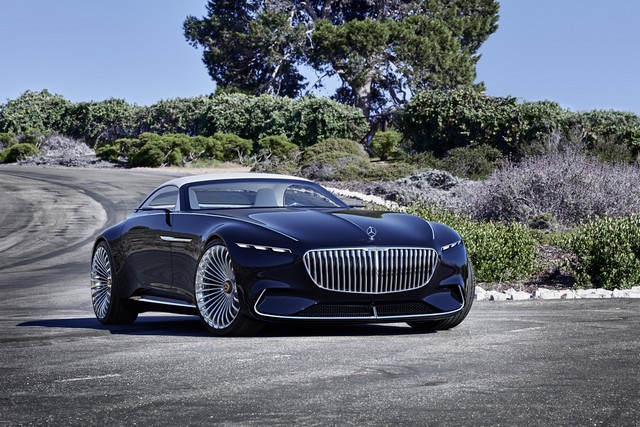 (Mercedes-Benz)
(Mercedes-Benz)
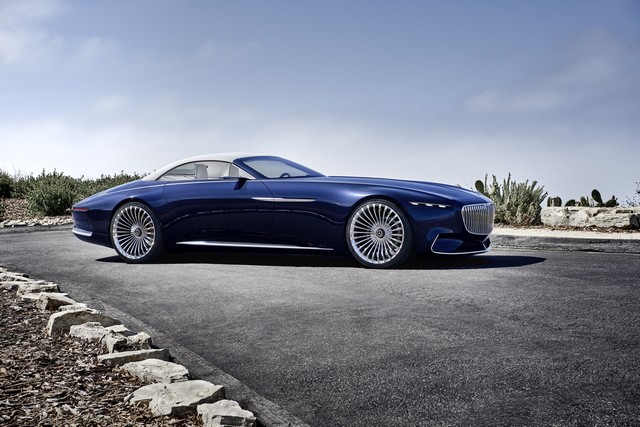 (Mercedes-Benz)
(Mercedes-Benz)
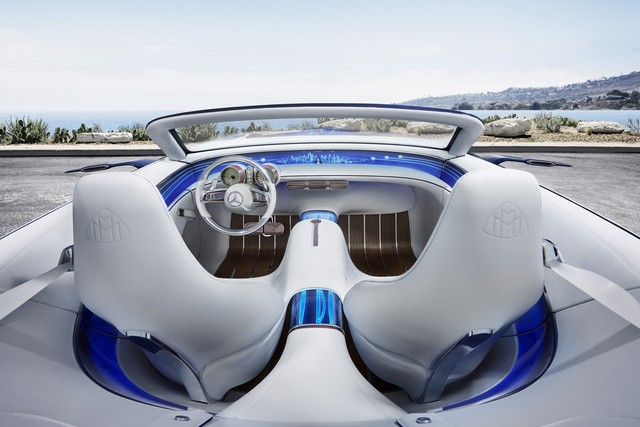 (Mercedes-Benz)
(Mercedes-Benz)
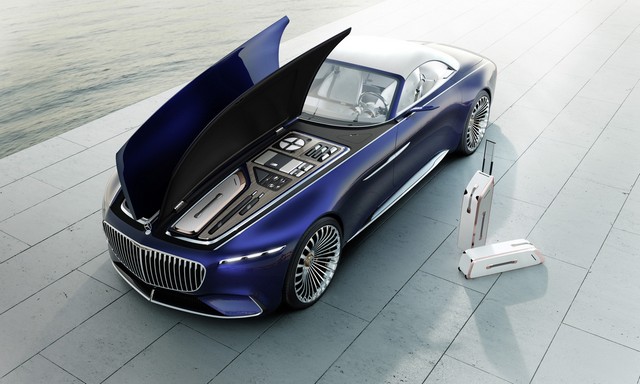 (Mercedes-Benz)
(Mercedes-Benz)
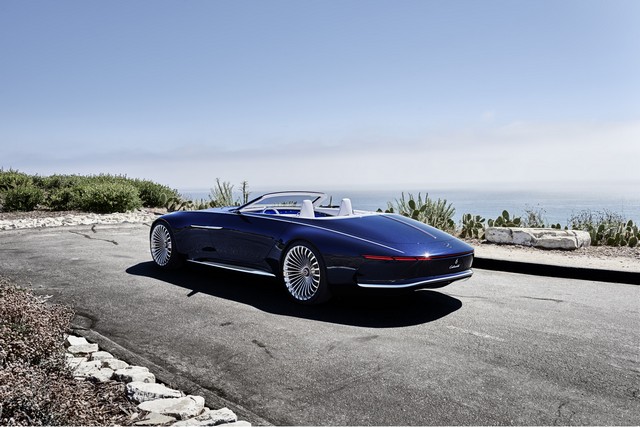 (Mercedes-Benz)
(Mercedes-Benz)
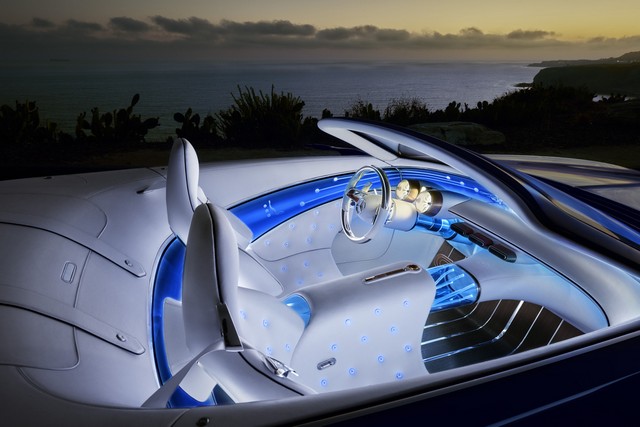 (Mercedes-Benz)
(Mercedes-Benz)
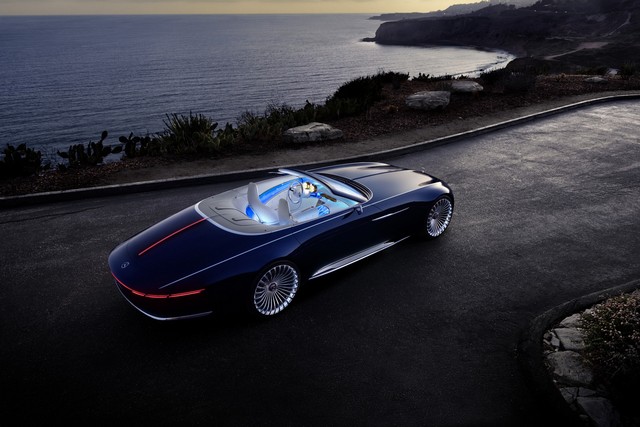 (Mercedes-Benz)
(Mercedes-Benz)
Here’s a thought: Wouldn’t we be far better off if the collective billions being blown on the autonomy craze were being spent on fixing this country’s woefully dilapidated infrastructure? I know, I know, fixing our bridges, roads and tunnels isn’t sexy enough for anyone, especially the swells in Silicon Valley. I get the fact that actually rolling this country’s sleeves up and attacking a looming national crisis isn’t glamorous. But the point needs to be made that unless and until our infrastructure issues are addressed, autonomous cars careening around on bad roads will be about as desirable as regular cars doing the same. In other words, it will still be a giant bowl of Not Good. (“END OF SUMMER BLUES.” –8/30)
And here we are three years into that plan, and what do the numbers indicate? In communicating with my friend and colleague Gary Vasilash, Editor-in-chief, Automotive Design & Production, who is an expert at scouring sales numbers and identifying trends, the numbers for Cadillac indicate that all is not well with GM’s investment. As Gary said, “According to GM, the average transaction price in August for Cadillac increased to $53,300. That’s good. And GMC hit a year-to-date ATP of $43,400. Not as good, but still solid. Yet it is interesting to note that GMC sold 47,718 vehicles in August and Cadillac 15,016.” Where is all of this going for Cadillac, you might ask? Nowhere good is the short answer.
GMC is operating as the not-so-little engine that could, marketing visually massaged (to differentiate them from the more mundane Chevrolet versions) luxury-oriented vehicles to new heights that push right up against Cadillac in the market. To its credit, GMC is not trying to pretend to be something it is not (although its advertising is still terribly lackluster), but it has found its niche in the market and within the corporation, and it’s delivering big-time profits for the denizens of the Silver Silos.
Cadillac? The turnaround of the brand was always going to take a long time; in fact I estimated three years ago that it would take the better part of a decade and a half. But three years into a five-year plan it’s not looking good. And pointing to the somewhat dubious success in China as vindication of “The Plan” isn’t cutting it.
You can blame the insatiable consumer demand for SUVs and crossovers in this country for Cadillac treading water in this market. And you can blame the fact that Cadillac’s product cadence is woefully lacking in addressing this issue, with the first new crossover not expected until next spring and subsequent product entries lagging behind that. But the fact remains that de Nysschen’s strategy to remake Cadillac in Audi’s image has been an egregious miscalculation.
As I’ve said repeatedly in my columns over the years, in order to succeed, Cadillac must be allowed to be Cadillac. But the current Cadillac brain trust refuses to acknowledge that this is a viable path for the brand. In fact Cadillac execs go out of their way to trample on the legacy of the brand at every opportunity. (“CADILLAC HAS ITS MOJO BACK? THE NUMBERS DON’T ADD UP.” –9/6)
I will predict right now that the endgame in all of this is bound to get ugly, and anyone who assumes that this will all work out for the best and that these auto companies will be newly reimagined as fluent IT entities is being incredibly naïve. Misguided and misdirected, these nouveau digital “experts” at the car companies will preside over the dissolution of some long-entrenched, historically important automotive empires, as these companies get sucked into a swirling maelstrom that they will simply be ill-equipped to cope with and get swallowed whole. Listen to enough of these IT expert blowhards at the car companies long enough and you might think that we’re fortunate to be witnesses at the creation of a brave new automotive world. Au contraire. We’re present for the destruction of the automotive world as we know it, and it will happen sooner than you think. (“PRESENT AT THE CREATION? HARDLY.” –9/20)
There is some solace in that Marchionne’s notion of “merging” with an automaker was nothing more than the sugarplum dreams of an unrepentant egomaniac. There was never going to be a merger with anyone, because much to Sergio’s considerable chagrin, he was never going to have the upper hand. So now what? Well, it has come down to this: As you read this Sergio’s payday is being furiously negotiated. And the buyer? None other than the Hyundai Motor Group. For Sergio the Great, it couldn’t be a more perfect fit, but let me be blunt here, for Marchionne anyone who has the dough-re-me would constitute the “perfect fit.”
Hyundai has the major league cash it will take to buy out FCA. They will gladly take Jeep, Ram trucks and the minivan (and plant), and discard the rest. And what about those convicted hacks in Washington who will stomp their feet in protest at the very idea that an iconic American brand like Jeep might be sold to the Koreans? This just in: It matters not one iota. FCA is a foreign-owned company and there’s not a damn thing any one of those politicians can do about it, even though many jobs will be lost and many lives in this area will be disrupted.
Marchionne has been in a race against time to make some sort of deal before he leaves FCA sometime in 2019, so he can retire among his cronies back in Italy and remind them that he is and will always be “The G.O.A.T.” and that they should never, ever forget it (as they slurp their espressos in sleepy cafes awash in never-ending Italian sunsets and never-ending piles of cash). But at the bitter end Marchionne was nothing more than a calculated charlatan with a Brobdingnagian ego, and the only thing “great” about him is that he will go down as one of the greatest carpetbagging mercenaries in automotive history. (“SERGIO POLISHES THE GOLDEN CANNOLI AS THE SALE OF FCA IS NIGH.” –10/4)
The ugly reality? There is not a chance in hell that it’s going to happen. The automobile industry – domestic or otherwise – has never gotten over the fact that there has been a seismic shift to Silicon Valley when it comes to societal cool. Smart, handheld devices have transformed everything about the culture here and around the world, and even though the automobile companies are still an inexorable part of America’s industrial fabric and a center of technology and manufacturing expertise, the once ever-present automojo that dominated our culture isn’t there anymore. And it’s not coming back either.
So what to do? The automobile companies actually do know how to do some things better than The New Masters of the Universe in Silicon Valley. For instance the auto companies know how to mass-produce a wide variety of precision, complicated machines for a bewildering kaleidoscope of applications that transfer people safely, efficiently and in comfort to their destinations. In fact, most in Silicon Valley – except for St. Elon, of course – have acknowledged that fact both publicly and behind the scenes, so what’s wrong with the auto companies concentrating on that? What’s wrong with the auto companies continuing their pursuit of building the best machines possible while exploring new avenues of propulsion and efficiency? Sure, future automobiles should be ready to be connected – at the discretion of consumers – but connectivity in and of itself should never be the raison d’etre of these machines.
Not surprisingly, rational thinking and logic are in short supply in the auto biz of late, and “selling air” has progressed from being a perennial cottage industry in marketing to an all-hands-on-deck pursuit at the highest levels of these companies. And the Siren Song of Connectivity has lured normally smart auto executives into a zombie state, which has caused them to lose all touch with reality. These auto execs actually believe that they can be Masters of the Universe again, when in fact that chapter of the storied history of the automobile was closed over 50 years ago. The idea that connectivity is the pot of gold at the end of the rainbow for the auto industry is preposterous. It may be boom times for “selling air” – but beyond that there is simply no there there. (“BOOM TIMES FOR SELLING AIR.” –10/18)
Now that these advanced technologies - electrification, autonomy, connected vehicles, ride sharing, etc. - have been brought forward and put on the table, they’re being dissected, researched, developed, invested in and promoted as the second coming of our transportation future. But devoting billions to what will prove to be a narrow part of the transportation equation is a dangerous game, one fraught with considerable peril. And to see auto companies spending huge amounts of money trying to straddle both sides of the equation is painful to watch, because some of them won’t make it. Mistakes and miscalculations are inevitable, and it will prove to be far easier to succumb to the vagaries of the market because of the wrong bets or the wrong roads taken than it will be to guess right and come out ahead. The car companies that will be most vulnerable going forward will be those that ignore the considerable cash that can be made over the next couple of decades selling traditional cars and trucks, because that’s where the real money will be made.
Some argue that we are on the precipice of a transformative mobility, one that will free us from the stifling binds of a moribund industry rooted in its past. And that’s all well and good, but this whole impetus is just getting started, and there is a long, long way to go. In fact, all it really means is that we’ve only reached the end of the beginning, and the next dimension of this business will play out in decades, not years. ("THE END OF THE BEGINNING.” –11/1)
So, as we wait for the death of the automobile and the industry as we know it, and suffer through this lingering interregnum, I have a message for the True Believers at all of the car companies: Don’t ever forget that you’re in the business of designing, engineering and building the best cars and trucks that you can possibly muster right now and in the foreseeable future. As long as you relentlessly execute to that goal, this industry will continue to not only be relevant and survive, and maybe even thrive. Because this just in: the Jetsons, at least until further notice, was just a cartoon. (“THE LINGERING INTERREGNUM.” –11/8)
And when the automotive world is inexorably altered, the brands that we’ve come to know and believe in with varying degrees of certainty will be severely altered, too, if not disappear outright. And to be honest, at this point, would you miss some of them? As the articles about the brave new transportation world just around the corner multiply, carefully nuanced discussion about the realities of what’s coming has given way to borderline hysteria. And now, as the snowball of commentaries turns into an avalanche, we’re being inundated with perspectives that cover the gamut from legitimate futurists to self-promoting hacks yearning for validity. I think it’s time to step back and take a deep breath. But at the same time, to suggest that everything will be the same is to wallow in a level of delusion that is simply hard to fathom, because the changes - though slower than the aggressive, “Ding-dong the automobile is dead!” zealots would like everyone to believe - are coming and they will indeed be dramatic, altering everyday life as we know it. So, let’s take a trip on the road to The Future, and see how your favorite brand – and brands that aren’t even a force yet – fare.
Acura. Once upon a time this brand allegedly represented Honda’s best thinking, although it rarely lived up to that lofty goal. It turns out that the current NSX would be the last high point for the brand, as once Honda merges with General Motors in 2022, Acura will cease to exist. The only thing that will survive from Acura is the “calipers” emblem, which will now grace the front of Honda’s fuel cell and autonomous vehicles.
Apple. Arrogance intact – no big surprise – Apple enters the autonomous ride sharing market with its “Air” automotive brand. The big selling point, according to Apple, is the ghostly, almost translucent bodywork on its vehicles, which allows people to see how hip the owners are.
Alfa Romeo. Before the St. Valentine’s massacre in 2019, when the Hyundai conglomerate buys FCA, lock, stock and espresso machines, Marchionne & Co. will spin off Alfa Romeo in the hopes that it will become a gold mine. Instead, it returns to being even more of a niche of a niche Italian brand than it is now, eventually fading from the American landscape by 2025.
Bentley. Abandoning all vestiges of its past, Bentley goes fully electric with autonomous capability for all of its vehicle offerings. Then, when its German overlords realize that no one really cares about electric Bentleys, they do an about-face and start churning out throwback ICE luxury-performance cars in 2026, to much industry-wide acclaim.
BMW. With “The Ultimate Driving Machine” advertising theme long since jettisoned to the dustbin of history, the automobile company once named BMW renames itself Happy Life. Churning out electric and autonomous vehicles to cover every possible market niche, as well as a few ICE-powered cars for the enthusiasts who still remember, Happy Life is acquired by Jaguar Land Rover in 2025, and is put to sleep in 2028 for being inconsequential and superfluous.
Cadillac. After chasing every possible German-esque (aka Audi) automotive quality it could mimic over the years and squandering one of the most hallowed automotive legacies of all time, once Cadillac goes all-in for electric and autonomous cars it finally runs out of people who care about the brand. A hard-core group of True Believers left at GM attempts to resurrect the brand at the end of the next decade, but by then it’s too late. Cadillac dies a miserable, lonely death here in the U.S. – except for the Escalade (see below) – and it will be sold only in China, renamed Shining Light.
Chevrolet. The once-proud GM brand is split into two. One half is relegated to building faceless, colorless transportation devices for the masses, with the iconic bowtie emblem jettisoned in favor of a stylized “thumbs-up” logo, signifying its new moniker - “UP.” The other half makes profitable Silverado pickups and SUVS, where you can still find the prominently placed bowtie on the front and back.
Corvette. The hotbed of GM True Believers young and old, Corvette becomes the performance brand for the corporation. Churning out predominantly ICE-powered machines – from two-seat sports cars to sedans and coupes (Camaro) and medium and large SUVs (including the Escalade) - with hybrid assist, the Corvette brand becomes one of the last bastions for enthusiasts and cool stuff around the world.
Ferrari. Thankfully existing as a full-blown ICE-powered high-performance brand with hybrid assist, Ferrari makes a comeback of sorts after Sergio Marchionne’s grand plan to turn Ferrari into an “all things for all people” brand is met with stiff resistance. After the company is removed from Marchionne’s control in 2023, Ferrari blossoms again, even though the least expensive Ferrari will cost $750,000 by then.
Ford. After pursuing every possible way to become a cell phone-like technology player, Ford does a “180” and goes back to building real cars, trucks and SUVs for real people. Driven by its historic ad theme “Opening the Highways to All Mankind,” Ford survives by being the honest American brand.
GMC. The other nostalgia brand in the GM portfolio, GMC soldiers on alongside Buick, although the “We Are Professional Grade” and “Like a Pro” marketing chatter is discarded in favor of the simple ad theme, “Faithfully.”
Honda. Once the powers that be at Honda acquiesced to the notion that they just couldn’t survive any longer by going it alone, its shocking merger with GM in 2022 turns out to be a very fruitful partnership indeed. Able to do a deep dive into shared technology, Honda comes up with a glittering array of advanced transportation vehicles that actually bristle with innovation, creative thinking and compelling design. Who knew?
Hyundai. After swallowing FCA whole for $20 billion, Hyundai lets Sergio & Co. keep the “F” and deletes the “C,” while retaining the Jeep and Ram Truck brands. While pouring more billions into both brands, Hyundai discovers that there’s an undeniable softening in the Ram Truck franchise, which is alarming, except that they can’t make enough all-electric Wranglers to keep up with demand, so the net-net of it is all good.
Infiniti. After power hungry Carlos Ghosn insists on making the Nissan-Renault-Mitsubishi alliance the King of the Automotive World, the Infiniti brand becomes a casualty of the Fog of War and falls by the wayside. Consumers stopped caring after Ghosn started badge-engineering Leafs and calling them Infinitis, reminding automotive historians of the dark days of the Cadillac Cimarron.
Jaguar. Flush from making money hand-over-fist for years, the conversion to 80 percent fully electric and 20 percent ICE-powered Jaguars goes smoothly. Because of this seamless transition to its product portfolio and the fact that their products are just so damn good, plus its decision not to cater to the ride-sharing fleets, Jaguar’s viability in the market grows.
Kia. The Korean brand partner to Hyundai undergoes a tumultuous upheaval as its “all hands on deck” foray into becoming the Korean BMW falls flatter than a skinny pancake. Forced to reassess itself yet again, Kia decides to build transportation for the masses, but since it’s doing what any number of manufacturers are already doing, it gets lost in translation, ceasing to exist by 2028.
Lamborghini. The German-financed Italian supercar company finally eclipses Ferrari as the most desirable exotic automotive brand in the world. Committed to fully-hybrid performance, Lamborghini not only stays true to itself, it undercuts Ferrari at every turn with better design, higher performance and an ultra-cool factor that Ferrari took for granted and walked away from years ago.
Land Rover. After a disastrous foray into trying to become the most luxurious all-electric SUV lineup by 2025, Land Rover operatives shove the pendulum back and decide to go back to offering primarily ICE-powered machines with electric assist. Land Rover enthusiasts are ecstatic.
Lexus. Toyota management decrees that not only will Lexus be fully electric, but Lexus models will be exclusively hydrogen electric fuel cell-powered. To no one’s surprise they pull it off and Lexus not only survives, but thrives.
Lincoln. After chasing their tails while trying to become fully electric, Lincoln operatives go back to hybrid-electric drivetrains and build SUV variations in small, medium and large. Except for the upcoming giant, old school Continental, which will utilize the Navigator architecture to create the most imposing luxury sedan on earth.
Lotus. With an infusion of endless Chinese money, Lotus finally becomes the high-performance sports car player it has always wanted to be, much to Porsche’s chagrin. With slick ICE/hybrid assist drivetrains, Lotus matches Porsche segment by segment with competitive, compelling machines.
Lyft. The Lyft product portfolio revolves around a tall, phone booth-like appliance that it hopes will become the obligatory autonomous ride-sharing device the world over. Except that it’s so ugly that people refuse to be caught dead in them.
McLaren. The British supercar manufacturer that marches to the beat of its own drumming will continue to build exotic hybrid supercars that revel in their non-Italian provenance. Its fans remain committed and enthusiastic.
Microsoft. Running an open-sourced design competition, Microsoft comes up with an autonomous/ride sharing/flying car that resembles George Jetsons' ride. But it doesn’t fly and its default setting leaves operators stranded with a blank screen by the side of the road, waiting to reboot.
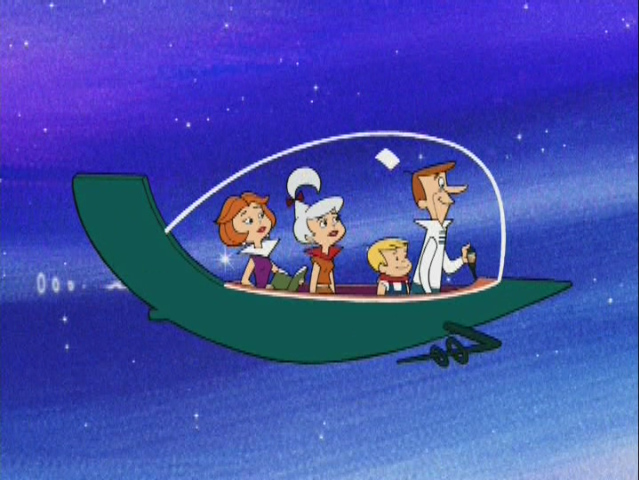
Mini. BMW finally runs out of variations on the Mini theme, with the brand going away in 2023.
Mitsubishi. The “Mitsubishi Miracle” never materializes because consumers ultimately couldn’t be bothered to give a shit, even with The Ghosnster calling the shots. End of the road by 2024.
Nissan. Shaking the leaves from the trees, Carlos Ghosn goes all-in for all electric, giving Nissan every piece of new technology that he can get his hands on. Except that all Nissan buyers want to know is how much that Altima is a month.
Porsche. The proud franchise of the VW Group leads with advanced technology, compelling designs, riveting high-performance and a desirability factor that remains sky high. It’s just going to cost a lot more to enjoy it.
Ram Trucks. For some reason the Ram Truck franchise gets lost in translation once the Hyundai Group gets its hands on it. The reason? In typical Hyundai fashion company operatives believe they know better and think they can do it better than it has ever been done before. Because of that the Ram Truck brand will be on the ropes by 2025.
Rolls Royce. Somehow the brand for people who continuously ask, “What’s the point of having fuck you money if you never say fuck you?” soldiers on with advanced technology only when it’s appropriate because after all, people who buy a Rolls Royce aren’t into being constrained by range limitations, or other such tedium.
Subaru. The brand grudgingly transitions to hybrid technology but only on its terms, and only if it can keep its rabid enthusiast base happy.
Tesla. The Grand Poobah his own self, Elon Musk, finally grows tired of the whole auto thing and winds down Tesla, selling off its technology to whoever will give him the most cash money for it. The beginning of the end was the disastrous Model 3 rollout, which craters the company once and for all. Tesla will continue to exist in other areas (batteries, home systems, etc.) but it will be out of the auto business all together by 2023.
Toyota. Akio Toyoda so desperately wants Toyota to not be left at the gate – any gate – that Toyota throws billions upon billions at any technology that even has a wisp of validity. Not exactly a focused strategy, but Toyota has enough cash to chase windmills, and in the end it will be there, one way or the other.
Uber. It will be taken over by Lyft. And nobody cares.
Volvo/Geely. This emerging automotive juggernaut will be equal to the competition in every transportation challenge that it puts its mind to. Behold the next great automotive empire, one that will grow in significance in the New Mobility economy.
VW. The world’s dominant automotive conglomerate – much to ol’ Carlos’s chagrin - VW will continue to dominate in all phases of the transportation/mobility game.
WAYMO. They think they can, they think they can, but will they? Or will they just keep demonstrating their gee-wiz autonomous technology on perfect, sun-baked roads in Arizona?
As you can see, some prominent brands will remain strong and thrive, while others will fade from the scene. Some of those will be dearly lamented, while others will hover somewhere near good riddance. This Brave New Brand World will hold many surprises yet to come. In the meantime, just consider this fair warning. ("A BRAVE NEW BRAND WORLD." -11/15)
Despite Elon’s latest show, the facts are these: Tesla is a failed enterprise by every conceivable measure. And building a few high-priced machines for The Enlightened Elite does not constitute anything more than a boutique car company with nowhere to go but down. The Model 3 was supposed to fix all of that, but that is just not gonna happen, by any stretch of the imagination. Not even close, in fact.
The net-net of this charade? The truck is a pipe dream, and frankly, other vehicle manufacturers will probably beat Musk to market with electrified trucks of their own. As for the sports car? Few people believe it will ever see the light of day, qualifying as even more of a pipe dream than the truck. At least the truck has a believable premise. The sports car is just more unmitigated bullshit and unbridled swingin’ dick-ism from America’s Master of Deception.
As I said last week, I predict that Musk, after being horribly embarrassed by the total failure of the Model 3, will finally grow tired of the whole auto thing and wind down Tesla, selling off its technology to whoever will give him the most cash money for it, so he can then focus on his real love – firing off rockets and colonizing Mars. Then we’ll all finally have something to be thankful for. (“AMERICA’S MASTER OF DECEPTION.” –11/22)
As most readers know, I despise and detest every frickin’ award perpetrated by the automotive media. It’s a veritable Huckster’s Paradise simply devoid of credibility on even the most basic of levels, and, as most enthusiasts who actually read the “buff” books know, they’re blatant revenue-generating scams masquerading as achievements worthy of gravitas. (“HUCKSTER’S PARADISE.” –11/29)
Editor’s Note: Peter churns out column after column, week after week, and produces a body of work every year that is simply staggering when you really think about it. But every once in a while I feel it’s a good idea to find out what’s really on Peter’s mind. Not in column form, but through a series of rapid-fire, real-time questions. So I conducted an email interview for a frenzied hour on Tuesday morning (12/6, 7:30 a.m.) and ready or not, here he is, PMD, in all his unpluggedness. –WG
What are your thoughts about the headlong rush to autonomous vehicles and the insistence by these auto companies – especially GM – and suppliers that they’re poised to make boatloads of cash in The New Mobility Economy?
I am beyond skeptical. First of all, the efficacy of the technology is suspect, because it’s fraught with fundamental issues and recurring problems. Anyone who thinks that a magic switch will be flipped and that we’ll all be suddenly awash in autonomous cars careening around faithfully doing what they’re supposed to do is simply wishful thinking. As for the companies lining up to be a part of The New Mobility Economy by cranking out cars for the masses to be squired around town in, on paper it all sounds good. The reality will be much less than that.
GM is insistent that they will be in the thick of The New Mobility Economy and that they will win. What do you make of this?
GM has been insistent about a lot of things over the years that haven’t panned out. What’s different about this time? They’re talking a good game, with Mary Barra and Dan "I Am" Ammann getting all puffed up about GM’s bullish future but it all remains to be seen. They are making a calculated shift to this “New Mobility Economy” but what they’re really doing is turning GM into a commodity company. And that may not end well for them.
So, what about the future?
Anyone who thinks that the idea – and the freedom – of personal mobility will give way to a blissful national stupor dominated by robo cars is missing the mark. As I’ve said repeatedly, robo cars will have limited use and applications in urban centers, but beyond that this country is going to be moved by personal vehicles that people acquire of their own volition for decades to come.
And then what?
I do see a “transportation dichotomy” looming. Some manufacturers will completely throw over to building mass-use autonomous cars, while other manufacturers will retain brands – especially luxury brands – for people who want them, because they will remain profitable. I think in the future people will have a “gray” car, meaning an appliance for when they absolutely need one for mundane duty, but they will also continue to seek out real cars that they actually desire to own. The car companies that squander the legacy of their brands will simply disappear into the fog. Take GM for instance. I can see GM management’s judgment being clouded on the bet that obscene profits will come their way through the promised ride-sharing explosion. But that is a recipe for disaster. The smarter automobile companies will identify brands that they absolutely will not relinquish, and then they will continue to nourish them well into the future. I have zero confidence that Barra and Ammann understand that.
And what about electric vehicles?
They’re coming hard and fast. And once the big players start cranking them out we’re going to see 25-30 percent market penetration in no time. But the fact that this country doesn’t have a cohesive plan for a national charging network is a travesty and simply inexcusable. I do think that hydrogen fuel cell-powered electric vehicles will be the ultimate winning technology.
What do you think of these new monthly vehicle subscriptions?
I think it's an interesting way of retaining brand loyalty, except that the prices as they're being quoted now are simply ridiculous. I will be interested in seeing what Lincoln does, as Lincoln executives have promised that their plan will be much more reasonable. A giant "we'll see."
You’ve been relentless in “Fumes” with a series of columns about The Future of Racing. Where do you think it’s going, ultimately?
Racing is in deep trouble. With the manufacturers chasing their tails on myriad mobility options, racing will continue to be pushed down the list of priorities. As I said a few weeks ago, all racing will become “vintage” racing, as the disconnect between what’s going on in our street vehicles and cars used in competition grows by the day. The only hope in all of this is that certain manufacturers will understand that there will be money to be made with high-performance cars and parts for decades to come, and the manufacturers who continue to play in the personal vehicle market will want to be there.
What about the two very disparate racing series, Formula E and NASCAR?
Formula E is the flavor of the moment but the series is completely devoid of excitement. This just in: The consistent allure of racing since Day One has been the visceral appeal of the sound and the fury. The woefully benign sound signature of a Formula E machine has all the audio appeal of a slot car, as in Not Good. Next year, when Formula E will run their entire races on one full charge (the competitors change cars half-way through the races now), it may become more interesting, but now? No.
As for NASCAR I have nothing good to say about it. It’s a nostalgia racing play and its appeal is fading faster than the Lions’ hopes of making the playoffs. The declining spiral of NASCAR’s popularity is actually accelerating, yet the powers that be in Daytona Beach steadfastly refuse to do anything about it, and NASCAR’s chief enablers – the participating manufacturers – continue to be dupes of Brian France and his inept posse. NASCAR management’s relentless intransigence combined with the litany of repeated mistakes is killing that form of motorsport. It’s up to the participating manufacturers to extract meaningful changes from NASCAR, and that means – at the very minimum – a 25 percent reduction in that death march of a schedule. I’m not holding my breath. (“PMD UNPLUGGED, PART I.” –12/6)
What are your thoughts about Mary Barra, in terms of her performance so far? –RC, Nashville, Tennessee.
I give her mixed marks. On the one hand she’s proven to be quite capable as a CEO, but on the other, I find some of her decisions to be on the ragged edge of being questionable. Walking away from markets is never a good thing, despite the long list of reasons given for GM’s decision to do so. I also think GM’s bet on The Future of the business has too much fantasy connected to it. It hinges on all sorts of things coming into play that really have no basis in reality. And that’s a recipe for disaster. Her performance yesterday at the Automotive Press Association event in Detroit was typical for Mary Barra - walking in the middle of the road, filled with platitudes, while carefully not saying much. Yes, I get it, much of an auto CEO’s life is about not really having a point of view and not saying anything that could be misconstrued, but at this point, I expect much more from her. And one last thing, the fact that she and Dan “I Am” Ammann have steadfastly refused to appoint a chief marketing officer for the company is a glaring mistake. The decision to have the divisions wander around in the marketing desert on their own has been an abject failure, especially given the insipid advertising they keep generating. I don’t know if she and Ammann are reluctant to add another million-dollar body to the executive suite because they’re deathly afraid of giving someone with serious marketing experience and a point of view the autonomy to make decisions, or what, but it’s an egregiously bad call and a giant, steaming bowl of Not Good.
What’s the deal, you haven’t said much about Elon and Sergio lately, are you going soft? –Hank J., Sausalito, California
I think I’ve pretty much covered those two, and I really don’t have much to add. Marchionne is positioning FCA to be sold and that’s the task given to him by his Fiat heirs/handlers, because they’re deathly afraid of running through – and out of – their money. And being the carpetbagging mercenary that he is he will do exactly that, most likely with Hyundai. As for Musk, for all of his brilliance and vision, the fact that he can’t build the Model 3 in quantity and with quality is an indictment of his entire automotive adventure. And his calculated distractions – an all-electric semi-truck! and I’m gonna launch my sports car to Mars! – are just that. And I love the fact that companies are already lining up to order his trucks, when he has demonstrated repeatedly that he can’t build his vision with any semblance of consistency or quality. Do they live under a rock, or what? I do have a new name for him though: Teslon. Because he has become the Teflon Tech Guru in that criticism bolstered with facts just rolls off of him. If I didn’t hear about either one of them ever again I’d be thrilled, but of course that’s not going to happen.
What do you really think is going to become of Cadillac? –J.H., Fort Lauderdale, Florida
Cadillac chief Johan de Nysschen has made it clear that he is not only remaking Cadillac in Audi’s likeness, but his favorite buzzword of late is “global” in that every decision made about the brand revolves around that premise. What does that mean, exactly? What that means is that Cadillac is well on its way to becoming a Chinese brand. “Global” is just another code word for China in de Nysschen’s lexicon, and to think otherwise is just delusional. Any hoary notions of Cadillac being one of the most iconic and authentic American brands is just that, they’re irrelevant to de Nysschen’s train of thought. Will the brand survive in America? Yes, because Cadillac is going to crank out enough crossovers to satisfy the insatiable demand for them by American consumers. As for the legacy and heritage of the brand, forget about it. De Nysschen doesn’t care, and apparently Barra and Ammann don’t care either.
What do you think of the car companies and their obsession to turn cars into mobile shopping platforms to rival the cell phone? –WG
I think it’s total, unmitigated bullshit. This just in: Cars will never replace the cell phone. They won’t even come remotely close to doing that, in fact. And this harebrained notion that by turning your automobile into a mobile shopping platform it will somehow draw new – and younger – owners into the auto orbit is the dumbest thing I’ve heard of oh, in the last three decades. The auto companies need to get over themselves, because they will never rival the Tech Gods in Silicon Valley. It just will not happen. But the auto companies do one important thing that Silicon Valley doesn’t do, and that’s build complex transportation machines that actually serve their customers extremely well. They need to stick to that, and leave mobile shopping and game playing to cell phones. (“PMD UNPLUGGED, PART II.” –12/13)
And so, here we are, at the end of another tumultuous year. To say it has been wild ride is superfluous, because it has become standard operating procedure in this business. And the time for reflection is extremely short, because the Detroit Auto Show is just three weeks away.
Today, approaching the nineteenth anniversary of this publication, I’m immensely proud of Autoextremist.com and what we’ve accomplished with it. And I’m even more proud to say that, despite countless imitators, Autoextremist.com is still the Incendiary Voice and still the force to be reckoned with in this business, while delivering the kind of commentary and insight that simply can’t be found anywhere else.
But that doesn’t mean I’m satisfied, or ready to call a truce with the industry and shuffle off into GoAlongToGetAlongLand to write about the calming effect of bunny rabbits and rainbows, and make wind chimes in my spare time.
I start my week at 3:00 a.m. each Monday morning and I immerse myself in this business the rest of the time because I am passionate about what I do. The writing is almost all consuming, but I wouldn’t have it any other way. In order to bring it every single week like I do, you have to love it. And I do.
But it’s no secret that the overall tone and tenor of the business has become even more tedious right now, which I didn’t think was possible. I’m tired of hearing that we’re on the precipice of profound change when in fact this business has its future pretty much laid out for it for the next ten years, at least. The headlong rush into autonomous vehicles is a train everyone’s jumping on, even though no one actually knows where it’s going or understands how long it’s going to take to get there. I view even the most conservative predictions about the onset of autonomy to be wildly optimistic, and some of these companies are going to get caught out, big-time. And this is me not feeling sorry for them.
Electrification is real, but how much and how fast? The eagerly accepted vision of a utopian all-electric automotive fleet is a full-on pipe dream, as the internal combustion engine has a long, long, way to go in terms of even more efficient development and its longevity. And guess what? The massive infrastructure investment needed to support electric vehicles – imagine every single gas station in the country having to add quick-charge electric vehicle islands in order to cover 25 percent electrification of the U.S. market – is simply staggering. We’re not there yet. We’re not even close, in fact. And it’s not happening anytime soon either.
I am tired of the bullshit, however, and I’m tired of the repeated mistakes perpetuated by people in this business who should know better. I’m also tired of the fundamental intransigence and the relentless adhering to hoary irrelevance that plagues this industry at every turn. But I’ll never get tired of calling out the new “messiahs” du jour trying to shove their act down our throats.
In fact, I’m just getting warmed up.
In closing, the winds of change blowing through this industry are ominous and cold. Seasoned, intelligent executives have convinced themselves that they’re on the cusp of a glittering, limitless future that will bury the traditional auto company model within the decade. Some of these executives are going to find out the hard way that their exuberant prognostications are not going to pan out. And because of that, some of the big-name auto companies that have become part of the American fabric will simply disappear.
As Bob Dylan succinctly said, A Hard Rain’s A-Gonna Fall.
Wordgirl and I wish the best to you and yours this Holiday Season, and all the best in the New Year.
And that’s the High-Octane Truth for the year 2017.






